The SM-65 Atlas was the first operational intercontinental ballistic missile (ICBM) developed by the United States and the first member of the Atlas rocket family. It was built for the U.S. Air Force by the Convair Division of General Dynamics at an assembly plant located in Kearny Mesa, San Diego). Atlas became operational in October 1959, but was soon made obsolete as an ICBM by new development,and was retired from this role by 1965.

Vandenberg Air Force Base is a United States Space Force Base located 9.2 miles (14.8 km) northwest of Lompoc, California. Established in 1941, Vandenberg Air Force Base is a space launch base, launching spacecraft from the Western Range and also performs missile testing. The United States Space Force's 30th Space Wing serves as the host wing for the base. In addition to its military space launch mission, Vandenberg Air Force Base also performs space launches for civil and commercial space entities, such as NASA.

Cape Canaveral Air Force Station (CCAFS) is an installation of the United States Space Force's 45th Space Wing.
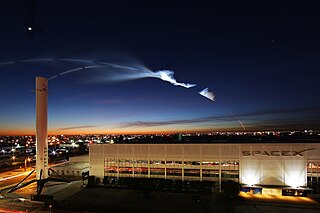
Space Exploration Technologies Corp., trading as SpaceX, is an American aerospace manufacturer and space transportation services company headquartered in Hawthorne, California. It was founded in 2002 by Elon Musk with the goal of reducing space transportation costs to enable the colonization of Mars. SpaceX has developed several launch vehicles, the Starlink satellite constellation, the Dragon cargo spacecraft, and flown humans to the International Space Station on the Crew Dragon Demo-2.

Ghost rockets were rocket- or missile-shaped unidentified flying objects sighted in 1946, mostly in Sweden and nearby countries.
The Western Range (WR) is the space launch range that supports the major launch head at Vandenberg Air Force Base. Managed by the 30th Space Wing, the WR extends from the West Coast of the United States to 90 degrees East longitude in the Indian Ocean where it meets the Eastern Range Operations involve military, government, and commercial interests. The WR has been operated by civilian contractors since its establishment, following the precedent of the Eastern Range. On 2003-10-01, InDyne Inc. took over the range contract from ITT Industries which had operated the range for the previous 44 years.
Below is a partial list of alleged sightings of unidentified flying objects or UFOs in Canada.

The 30th Space Wing is a United States Space Force space launch wing. The 30th Space Wing is assigned to Space Operations Command and headquartered at Vandenberg Air Force Base, California. The 30th Space Wing is responsible for all space launch operations from the west coast, which includes all polar launches. It manages the Western Range and launch activities for the Space Force, Department of Defense, NASA, and other private space corporations. The 30th Space Wing also supports test and evaluation launches of the U.S. Air Force's intercontinental ballistic missile force.
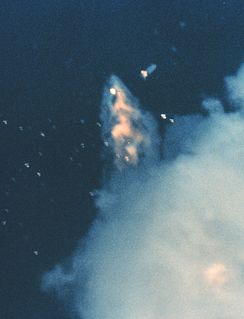
In the field of rocketry, range safety may be assured by a system which is intended to protect people and assets on both the rocket range and downrange in cases when a launch vehicle might endanger them. For a rocket deemed to be off course, range safety may be implemented by something as simple as commanding the rocket to shut down the propulsion system or by something as sophisticated as an independent Flight Termination System (FTS), which has redundant transceivers in the launch vehicle that can receive a command to self-destruct then set off charges in the launch vehicle to combust the rocket propellants at altitude. Not all national space programs use flight termination systems on launch vehicles.
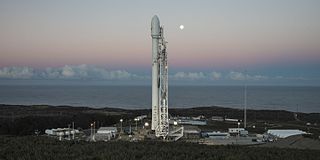
Space Launch Complex 4 (SLC-4) is a launch and landing site at Vandenberg Air Force Base with two pads, both of which are used by SpaceX for Falcon 9 launch operations; operating as Landing Zone 4 (LZ-4) for SpaceX landings.

The 10th Aerospace Defense Group was inactivated on 31 December 1970 by the United States Air Force (USAF). Its last assignment was with Fourteenth Aerospace Force at Vandenberg Air Force Base, California. The 10th Aerospace Defense Group and Squadron were the sole operators of the United States' second nuclear-tipped anti-satellite weapon, Weapons System 437 (WS-437). For this reason the squadron continues the group history through temporary bestowal.
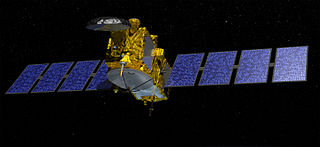
Jason-3 is a satellite created by a partnership of the European Organisation for the Exploration of Meteorological Satellites (EUMETSAT) and National Aeronautic and Space Administration (NASA), and is an international cooperative mission in which NOAA is partnering with the Centre National d'Etudes Spatiales. The satellites' mission is to supply data for scientific, commercial, and practical applications to sea level rise, sea surface temperature, ocean temperature circulation, and climate change.

The Norwegian spiral anomaly of 2009 appeared in the night sky over Norway. It was visible from, and photographed from, northern Norway and Sweden. The spiral consisted of a blue beam of light with a greyish spiral emanating from one end of it. The light could be seen in all of Trøndelag to the south and all across the three northern counties which compose Northern Norway, as well as from Northern Sweden and it lasted for 10 minutes. According to sources, it looked like a blue light coming from behind a mountain, stopping in mid-air, and starting to spiral outwards. A similar, though less spectacular event had also occurred in Norway the month before. Both events had visual features of failed flights of Russian RSM-56 Bulava SLBMs, and the Russian Defense Ministry said shortly after that such an event had taken place on 9 December.

Falcon 9 prototypes were experimental flight test reusable rockets that performed vertical takeoffs and landings. The project was privately funded by SpaceX, with no funds provided by any government until later on. Two prototypes were built, and both were launched from the ground.

The SpaceX reusable launch system development program is a privately funded program to develop a set of new technologies for an orbital launch system that may be reused many times in a manner similar to the reusability of aircraft. SpaceX has been developing the technologies over several years to facilitate full and rapid reusability of space launch vehicles. The project's long-term objectives include returning a launch vehicle first stage to the launch site in minutes and to return a second stage to the launch pad following orbital realignment with the launch site and atmospheric reentry in up to 24 hours. SpaceX's long term goal is that both stages of their orbital launch vehicle will be designed to allow reuse a few hours after return.
SkySat is a constellation of sub-meter resolution Earth observation satellites owned by Planet Labs, providing imagery, high-definition video and analytics services. Planet acquired the satellites with their purchase of Terra Bella, a Mountain View, California-based company founded in 2009 by Dan Berkenstock, Julian Mann, John Fenwick, and Ching-Yu Hu, from Google in 2017.

As of 2020, SpaceX operates four launch facilities: Cape Canaveral Space Launch Complex 40 (SLC-40), Vandenberg Air Force Base Space Launch Complex 4E (SLC-4E), Kennedy Space Center Launch Complex 39A (LC-39A), and South Texas Launch Site. Space Launch Complex 40 was damaged in the Amos-6 accident on September 2016 and repair work was completed by December 2017. SpaceX believes that they can optimize their launch operations, and reduce launch costs, by dividing their launch missions amongst these four launch facilities: LC-39A for NASA launches, SLC-40 for USAF national security launches, SLC-4E for polar launches, and South Texas Launch Site for commercial launches.
A space jellyfish is a rocket launch-related phenomenon caused by sunlight reflecting off the high altitude rocket plume gases emitted by a launching rocket during morning or evening twilight. The observer is in darkness, while the exhaust plumes at high altitudes are still in direct sunlight. This luminous apparition is reminiscent of a jellyfish. Sightings of the phenomenon have led to panic, fear of nuclear missile strike, and reports of unidentified flying objects.
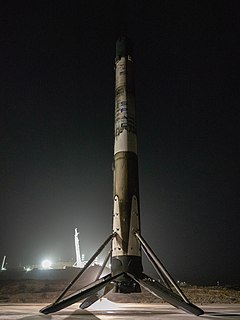
Falcon 9 booster B1048 was a reusable orbital-class Block 5 Falcon 9 first-stage booster manufactured by SpaceX. B1048 was the third Falcon 9 Block 5 to fly and the second Block 5 booster to re-fly. It became the second orbital-class booster to fly a third time and is the first booster ever to be launched five times. B1048 service came to an end on its fifth flight when an engine shut down prematurely on launch. Whilst the primary mission was unaffected and the Starlink payload deployed successfully, B1048 was unable to land. SpaceX CEO Elon Musk announced an investigation was underway following the launch anomaly.
















